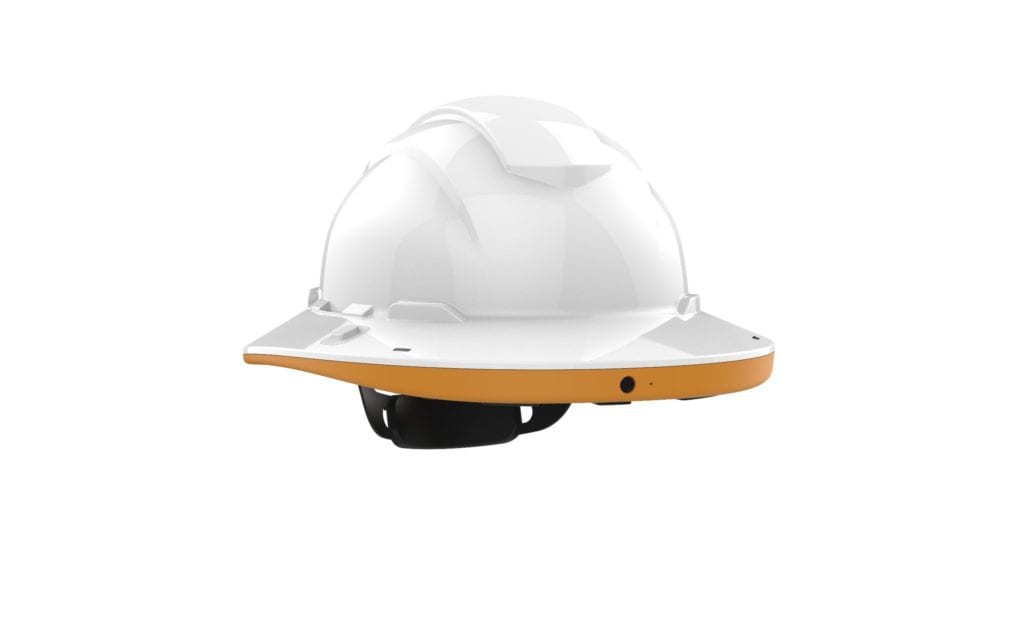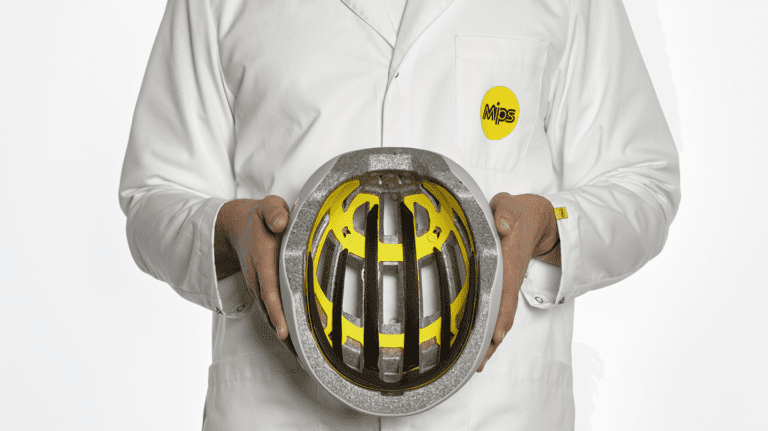(Photo: MIPS)
The hardhat has steadily evolved since it first became popular during the construction of the Golden Gate Bridge in the 1930s. Initially made of canvas, they’ve since been made of everything from metal to fiberglass before the plastic incarnations we know today. It wasn’t until the 1970s when OSHA was created that the hardhat became mandatory on all US construction sites.
In recent years, the evolution of the hardhat has grown to include high-tech add-ons like the Internet of Things sensors, microphones, cameras, and more. Today’s smart hardhats not only keep workers safe from impact injuries or falling debris but can also help boost productivity by facilitating better office-to-field communication or let an injured worker call for help with a single button press.
The following are three cutting-edge hardhats that do much more than simply protect workers’ noggins.
MIPS Reduces Risk of Traumatic Brain Injuries

It’s no secret that construction can be dangerous work; hardhats wouldn’t have been necessary otherwise. However, your standard hardhat is mainly designed to protect against sudden, direct jolts of force as opposed to more angled impacts that cause the head and neck to rotate, which can lead to severe brain injuries.
A Swedish company called MIPS has developed a protective helmet technology called the Multi-directional Impact Protection System (also called MIPS) to address what they see as a gap in the protection a conventional hardhat offers.
“The problem is that conventional industrial safety helmets most often protect against injuries such as skull fractures but do not reduce rotational motion to a sufficient level. Our brain is about six to seven times more sensitive to rotational motion than to linear impacts, which makes the inclusion of MIPS a natural step,” MIPS CEO Max Strandwitz told For Construction Pros.
The MIPS system allows a worker’s head to move ever so slightly inside the helmet, around 10mm–15mm in any direction, thanks to a low-friction layer of polycarbonate plastic. This helps redirect rotational motion to reduce the risk of brain injury.
Initially, MIPS were exclusively found in recreational helmets for activities like bicycling, skiing, and motorcycling. In the last few years, though, the company turned its attention to the construction hardhat.
“We, as a company, put a lot of effort into this, and we would never be in the construction site helmet market if we didn’t believe that it would make a difference,” MIPS CTO Peter Halldin told For Construction Pros.
“We also know, of course, that the worker needs a helmet that is comfortable, light, well ventilated, and so forth. It’s important also to implement technology without changing or reducing the other key features of the helmet.”
Lantronix Guardhat Incorporates Internet of Things

The development of high-tech smart hardhats would not have been possible without the reduction in the size of the necessary electrical components. After all, a hardhat wouldn’t do much good if the added features made it too heavy to be comfortably and safely worn. Software-as-a-Service (Saas) provider Lantronix Inc. has managed to cram a whole lot of digital smarts into their Guardhat Communicator, including microphones, a camera, and the Internet of Things (IoT) sensors.
Guardhat’s smart sensors continually monitor workers’ surroundings, sending an alert in the event of danger. The onboard array of technological features connects workers to a remote command center, facilitating communication by voice or video, location sharing, and allowing workers to get help with the touch of a button.
“Using sensors, Guardhat identifies and shares information about the worker’s location with the home base. Comprehensive communications options allow for voice and video calls. A single button enables the user to call for help,” Anupam Sengupta, CTO and co-founder of Guardhat Inc. told For Construction Pros.
The goal of the Guardhat was to “re-envision the hardhat as a wearable device at the edge of an end-to-end industrial safety system.” Not only does the Guardhat enable remote communication, but its sensors also provide “a real-time decision-making and data analytics platform connecting industrial workforces through situational awareness.”
Better Jobsite Contact Tracing

Developed in 2017, the WakeCap’s initial purpose was to track workers’ location on-site to improve general safety and efficiency. When COVID-19 hit, it quickly found a new use. According to Construction Dive, after a worker on a 2,200-person construction site in Europe had come down with the virus last spring, the company quickly realized they could repurpose the WakeCap’s location-tracking abilities. It could help retrace the infected worker’s steps, including identifying everyone with whom he came into contact, according to Construction Dive.
In mere hours, WakeCap mapped out the sick worker’s movements and produced a list of everyone he had close interactions with over an extended period, allowing managers to determine who else should be quarantined. Since then, other companies have used the WakeCap for a variety of contact tracing and social distancing enforcing applications. It has helped identify which areas of a jobsite require disinfecting, determine who may have been affected and require fill-in workers to ensure project continuity, and make sure unavoidably high-traffic areas allow for proper social distancing.
The WakeCap system functions via a lightweight device attached to a hardhat. The device connects to an array of battery-powered “anchors,” establishing a wireless network on-site that can be viewed from a central dashboard.

Leave a Reply